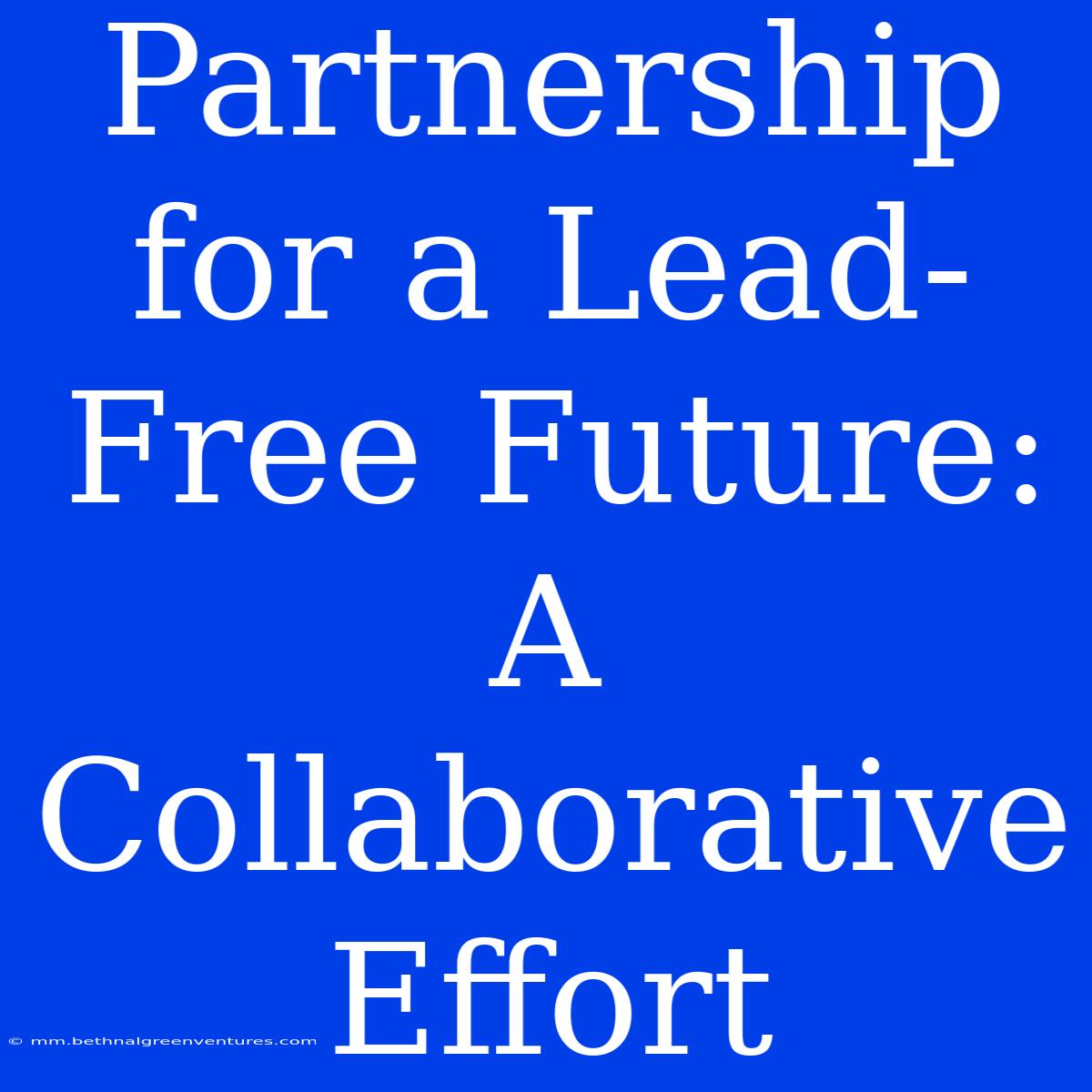Partnership for a Lead-Free Future: A Collaborative Effort to Protect Our Health and Environment
Is a lead-free future just a dream? Absolutely not! Partnerships are driving a collaborative effort to make a lead-free future a reality, safeguarding both human health and the environment.
Editor Note: This article explores the critical role of partnerships in achieving a lead-free future. It delves into the benefits of collaboration, key stakeholders involved, and strategies implemented to protect individuals and the planet from lead contamination.
Lead is a toxic heavy metal with no known safe level of exposure. It can harm the brain, nervous system, and kidneys, particularly in children. Lead contamination also poses significant environmental risks, impacting water resources and ecosystems.
This comprehensive guide delves into the intricacies of partnership initiatives aimed at achieving a lead-free future, highlighting the importance of collaborative efforts in addressing this global health and environmental challenge.
Key takeaways of partnership for a lead-free future
| Aspect of Partnership | Description |
|---|---|
| Collaboration | Working together to achieve common goals. |
| Stakeholders | Diverse groups with shared interests in a lead-free future. |
| Strategies | Action plans to prevent and remediate lead contamination. |
| Impact | Positive outcomes for health, environment, and sustainability. |
Collaborative Approaches to a Lead-Free Future
Partnership for a Lead-Free Future
- Collaboration: Effective partnerships involve a wide range of stakeholders, including governments, industry, communities, and non-governmental organizations.
- Stakeholders:
- Governments: Enacting and enforcing regulations to minimize lead exposure.
- Industry: Adopting lead-free alternatives in manufacturing and product development.
- Communities: Advocating for lead-free policies and promoting awareness.
- Non-governmental Organizations (NGOs): Conducting research, providing education, and supporting community initiatives.
- Strategies:
- Lead-free products: Promoting the use of lead-free paints, plumbing materials, and other products.
- Environmental remediation: Cleaning up contaminated sites and reducing lead levels in soil and water.
- Education and outreach: Raising public awareness about the dangers of lead exposure and promoting safe practices.
- Resource mobilization: Securing funding for research, remediation, and community initiatives.
The Importance of Partnerships in Achieving a Lead-Free Future
Partnerships are crucial for achieving a lead-free future because they:
- Leverage resources: Combining the expertise, resources, and influence of diverse stakeholders.
- Amplify impact: Increasing the reach and effectiveness of lead-free initiatives.
- Promote innovation: Facilitating the development of new technologies and solutions.
- Foster community engagement: Encouraging community participation and ownership of lead-free efforts.
Examples of Successful Partnerships
Numerous partnerships around the world have made significant contributions to reducing lead exposure and promoting a lead-free future. Some notable examples include:
- The Global Alliance to Eliminate Lead Paint: Working to eliminate lead paint globally through policy changes, industry engagement, and public awareness.
- The World Health Organization (WHO): Providing guidance and technical support to countries on reducing lead exposure and promoting child health.
- The United Nations Environment Programme (UNEP): Advocating for international cooperation to address lead pollution and promote sustainable development.
FAQs about Partnership for a Lead-Free Future
Q: How can I get involved in lead-free initiatives?
A: You can join community groups, support organizations working on lead-free issues, and advocate for policies that promote lead-free environments.
Q: What are the benefits of a lead-free future?
A: A lead-free future ensures a healthier environment for all, particularly children, and reduces the risk of lead poisoning.
Q: What are some challenges in achieving a lead-free future?
A: Challenges include:
- Cost of remediation: Cleaning up lead contamination can be expensive.
- Availability of lead-free alternatives: Not all products have lead-free alternatives available.
- Public awareness: Raising awareness about the dangers of lead exposure is essential.
Tips for Promoting a Lead-Free Future
- Support organizations: Contribute to organizations working on lead-free initiatives.
- Advocate for change: Encourage policymakers to prioritize lead-free policies.
- Educate yourself and others: Spread awareness about the dangers of lead exposure.
- Choose lead-free products: Whenever possible, opt for lead-free alternatives.
Conclusion
Partnership for a Lead-Free Future is an essential collaborative effort to protect health and the environment. Through partnerships, we can build a safer and healthier future for generations to come.
By combining resources, amplifying impact, and promoting innovation, these partnerships are paving the way towards a world free from the harmful effects of lead. Let's work together to make this dream a reality.
